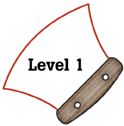|
National Science Education Standards
An object’s motion can be described by tracing and measuring its
position over time. (Page 127)
Objects in the sky have patterns of movement. The sun, for example, appears
to move across the sky in the same way every day, but its path changes
slowly over the seasons. The moon moves across the sky on a daily basis
much like the sun. The observable shape of the moon changes from day to
day in a cycle that lasts about a month. (Page 134)
The sun, moon, stars, clouds, birds, and airplanes all have properties,
locations, and movements that can be observed and described. (Page 134)
|
|
Benchmarks
There are more stars in the sky than anyone can easily count, but they
are not scattered evenly, and they are not all the same in brightness
or color. (Page 62)
The sun can be seen only in the daytime, but the moon can be seen sometimes
at night and sometimes during the day. The sun, moon, and stars all appear
to move slowly across the sky. (Page 62)
The moon looks a little different every day, but looks the same again
about every four weeks. (Page 62)
|


